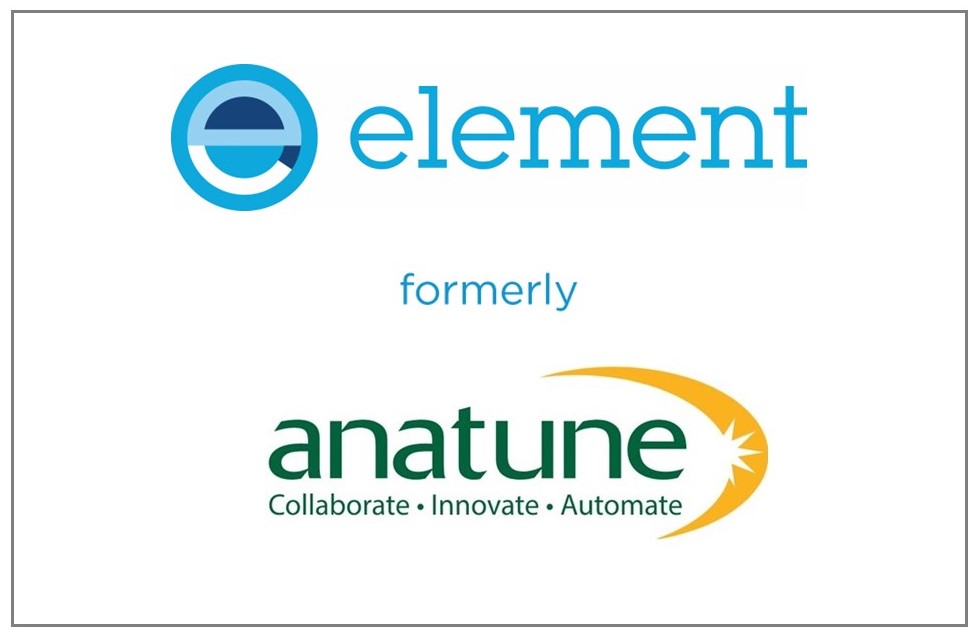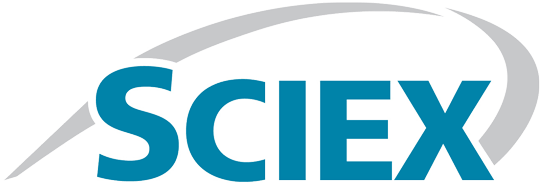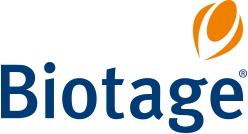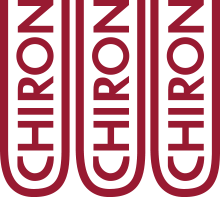Application Notes
Application notes are produced by LTG members, or its corporate or associate sponsors, for the purpose of public education in analytical toxicology.
Fast and easy separation of 23 drugs of abuse including high, stable resolution of isobaric opioids from human urine by UHPLC-MS/MS
There is an urgent need for robust analytical methods for performing research on the measurement of drugs of abuse. This has resulted in hospital and screening laboratories needing to research new methods and tools for their screening protocols, manage the ever changing landscape of new novel psychoactive substances, and increase method throughput to meet increasing demand.
The opioid class has several isobaric compounds and the adequate and stable resolution of these compounds is essential in ensuring a robust and accurate analysis. High chromatographic resolution is also important in complex mixtures such as this to minimize co-elution of both monitored and unseen matrix components to ensure optimal ionization efficiency and a reduction in matrix effects. As resolution is a function of efficiency (N), improvements in resolution can be achieved with the use of highly efficient analytical columns. The new Accucore Biphenyl 2.6 μm column shows a well-tuned balance of efficiency and selectivity and is a powerful and robust tool for the determination of drugs of abuse.
Read full application note in pdf...
Waters Forensic Capabilities Brochure
Waters offer COMPLETE INTEGRATED AND ROBUST solutions for both Forensic and Toxicology Laboratories. Waters screening and confirmatory analysis solutions are based on both high resolution time-of-flight (Tof) and quadrupole mass spectrometry (MS) technology and offer unmatched ease-of-use, accuracy and sensitivity.
- Pre configured methods and workflows
- Industry leading UPLC, MS, informatics and chemistries
- A team of dedicated scientists with extensive experience and understanding of forensic and toxicology applications
Waters offers a portfolio of complete solutions specifically designed for forensic and toxicology laboratories whether you need to:
- Identify seized substances
- Perform a comprehensive screen for DUID and post-mortem investigations
- Analyse prohibited substances in sports doping
- Monitor illicit drug substances
- Keep up with the demand to detect and identify novel psychoactive substances (NPS)
Read full application note in pdf...
A comprehensive Method for the Analysis of Pain Management Drugs and Drugs of Abuse incorporating simplified, Rapid Mixed-Mode SPE with UPLC-MS/MS for Clinical Research.
Analyte panels for pain management research often include some common drugs of abuse as well as substances such as opioids, benzodiazepines and often stimulants. Waters has developed a method for the quantification of a comprehensive drug panel to achieve the appropriate analytical sensitivity, selectivity and accuracy.
Read full application note in pdf...
Development of simple, fast SPE Protocols for Basic Analyte Extraction with Phospholipid Removal Using Oasis PRiME MCX
Liquid chromatography coupled to tandem mass spectrometry (LC-MS/MS) is one of the most widely used techniques employed to quantify analytes in biological samples. Endogenous phospholipids complicate the analysis resulting in 'matrix effects' where the MS signals are suppressed or enhanced. A variety of sample preparation approaches have been developed to overcome these challenges. Waters has developed a solid-phase extraction (SPE) technique to effectively remove these phospholipids using mixed-mode reverse-phase/strong cation-exchange (RP/SCX) SPE
Read full application note in pdf...
A Novel Solution for EtG /EtS Analysis in Human Urine by LC-MS/MS
Ethyl Glucuronide (EtG) and Ethyl Sulfate (EtS) are unique biomarkers of alcohol use. The detection of these metabolites has proven advantageous for zero tolerance treatment programs and abstinence enforcement where information regarding recent alcohol consumption is required. The analysis of EtG and EtS offers many advantages for abstinence monitoring including the detection window(~ 3days), stability in stored specimens (non -volatile), and specificity. EtG and EtS are both polar which makes them difficult to retain via reversed-phase chromatography. Both compounds are also very sensitive to matrix interferences which can result in being unable unable to achieve low limits of detection. Isobaric interferences can also make impossible. In this study, a simple dilute and shoot method was developed, validated, and applied to patient samples for the analysis of EtG and EtS in human urine by LC-MS/MS enabled by the use of the novel Raptor EtG/EtS column.
Read full application note in pdf...
A Novel Solution for EtG /EtS Analysis in Human Urine by LC-MS/MS
Ethyl Glucuronide (EtG) and Ethyl Sulfate (EtS) are unique biomarkers of alcohol use. The detection of these metabolites has proven advantageous for zero tolerance treatment programs and abstinence enforcement where information regarding recent alcohol consumption is required. The analysis of EtG and EtS offers many advantages for abstinence monitoring including the detection window(~ 3days), stability in stored specimens (non -volatile), and specificity. EtG and EtS are both polar which makes them difficult to retain via reversed-phase chromatography. Both compounds are also very sensitive to matrix interferences which can result in being unable unable to achieve low limits of detection. Isobaric interferences can also make impossible. In this study, a simple dilute and shoot method was developed, validated, and applied to patient samples for the analysis of EtG and EtS in human urine by LC-MS/MS enabled by the use of the novel Raptor EtG/EtS column.
Read full application note in pdf...
A Novel Solution for EtG /EtS Analysis in Human Urine by LC-MS/MS
Ethyl Glucuronide (EtG) and Ethyl Sulfate (EtS) are unique biomarkers of alcohol use. The detection of these metabolites has proven advantageous for zero tolerance treatment programs and abstinence enforcement where information regarding recent alcohol consumption is required. The analysis of EtG and EtS offers many advantages for abstinence monitoring including the detection window(~ 3days), stability in stored specimens (non -volatile), and specificity. EtG and EtS are both polar which makes them difficult to retain via reversed-phase chromatography. Both compounds are also very sensitive to matrix interferences which can result in being unable unable to achieve low limits of detection. Isobaric interferences can also make impossible. In this study, a simple dilute and shoot method was developed, validated, and applied to patient samples for the analysis of EtG and EtS in human urine by LC-MS/MS enabled by the use of the novel Raptor EtG/EtS column.
Read full application note in pdf...
A Fully Automated On-line Forensic Toxicology Solution for the Determination of Opioids in Blood by Smart SPE Clean-Up and GC-MS
Many forensic toxicology service labs are facing increasing casework, often times with reduced staff numbers. While there is significant pressure on the lab analysts to reduce case turnaround times (TATs), it is essential that the results are reproducible and reliable for consideration as evidence in a Court of Law. Automation of the sample preparation workflow can not only offer faster TATs and excellent repeatability of results, but it can also free up the lab analysts for thinking tasks such as data analysis, method development and reporting. This application note describes the fully automated on-line workflow for the determination of four forensically-relevant opiates in blood by gas chromatography-mass spectrometry (GC-MS), including morphine, 6-monoacetylmorphine (6-MAM), codeine and dihydrocodeine (DHC).
Read full application note in pdf...
Simultaneous Determination of Prescription and Designer Benzodiazepines in Urine and Blood by SPE and LC-MS/MS
Benzodiazepines are recurrently utilized as illegal recreational drugs. Similar to other commonly abused compounds, such as cannabinoids or amphetamines, “legal” alternatives have been developed for Benzos as well in an attempt to bypass the controlled substances act. This featured application utilizing UCT’s Clean Screen® XCEL I SPE columns not only targets current benzodiazepines/metabolites of interest, but also the latest designer analogs being formulated.
Read full application note in pdf...
A Modified QuEChERS Approach for the Extraction of Common Prescription and Illicit Drugs from Liver Prior to LC/MS-MS Analysis
Liver is the primary alternative tissue used for toxicological analysis based on the biological role it plays in the metabolism of drugs and toxicants in the body. While the benefits for analyzing liver are clear, the one major drawback is the amount of sample preparation needed in order to get specimens ready for analysis. This application outlines a modified QuEChERS (Quick, Easy, Cheap, Effective, Rugged and Safe) technique that has been optimized to extract common prescription and illicit drugs from liver prior to analysis by LC-MS/MS.
Read full application note in pdf...
Analysis of Pesticide Residues and Mycotoxins in Cannabis using QuEChERS Extraction, ChloroFiltr® dSPE Cleanup and LC-MS/MS Detection
This application note outlines a QuEChERS method for the simultaneous analysis of 47 pesticides and 5 mycotoxins in cannabis, including most of the LC-MS/MS amenable compounds on the Massachusetts and Nevada monitoring lists. Sample purification is carried out using UCT’s new cleanup product SpinFiltr™, which combines the convenience of classical dispersive-SPE (dSPE) with an ultrafiltration tube containing a 0.2 μm filter membrane to simultaneously remove unwanted matrix components and filter the sample prior to LC or GC analysis.
Read full application note in pdf...
Analysis of Synthetic Opiates and Novel Analgesics in Urine using SPE and HPLC-MS/MS
Opiate abuse is drastically on the rise in the United States. In addition to traditional naturally occurring opiate compounds, forensic toxicologists also need the ability to rapidly identify synthetic opioid-like drugs. Presented is a rapid, three step SPE procedure for the identification and quantification of fentanyl and its major urinary metabolite norfentanyl, in addition to four “designer” compounds: U-47700, W-18, W-15 and furanyl fentanyl.
Read full application note in pdf...
Determination of 78 Banned or Controlled Racing Industry Drugs in Horse Urine Using SPE and LC-MS/MS
The world of horse race drug testing is constantly evolving. New regulations regarding banned and controlled substances can be found throughout the United States, Europe, Asia and Australia. The need for a reliable and quick SPE method for the determination and separation of a wide variety of drug classes is critical to laboratories certified in this realm of veterinary medicine.
Read full application note in pdf...
Determination of 11-nor-9-Carboxy-THC in Human Urine by QuEChERS and LC-MS/MS
11-nor-9-Carboxy-THC, also known as THCA or carboxy-THC, is the main secondary metabolite of THC (the active component of marijuana) formed in the human body. THCA is excreted in urine in the form of glucuronide conjugates. Typical sample preparation methods for THCA in urine include liquid-liquid extraction (LLE) and solid phase extraction (SPE). This application utilizes a novel sample preparation technique, QuEChERS to effectively quantitate THCA levels in human urine.
Read full application note in pdf...
Application Solutions for Forensic Toxicology
Battling the proliferation of drugs is not easy. Identifying them can be.
As new forms of “designer” drugs threaten public safety, there is an immediate need for advanced ways to classify these complex compounds. When it comes to sensitivity, reproducibility and ease-of-use, nothing outperforms Waters LC-MS based Toxicology Screening Application Solutions. To solve any drug analysis challenge that comes your way—with more confidence in your findings—see why Waters solutions are all the rage.
Read full application note in pdf...
Solutions that meet your demands for forensics & toxicology
Agilent Technologies has combined all of their general forensic-related application notes and methods into a single 793-page document, complete with an index and searchable text. The material is divided into four categories: Criminalistics, DNA, Doping, and Toxicology. Some sample content is listed below.
Criminalistics
- Analysis of Gunshot Residue by ICP-MS
- Methods for the Forensic Analysis of Adhesive Tape Samples by LA-ICP-MS
- Analysis of Forensic Glass Samples by Laser Ablation ICP-MS
DNA
- Using the 2100 Bioanalyzer to Optimize the PCR Amplification of Mitochondrial DNA Sequences
Doping
- Development of a Screening Analysis by LC Time-Of-Flight MS for Drugs of Abuse
- Methods for SAMHSA Compliant Workplace Urine Drug Testing
Toxicology
- Analysis of Basic Drugs in Postmortem Blood by HPLC with Diode Array Detection
- Detection of Cannabinoids in Oral Fluid Using Inert Source GC/MS
- Rapid and Robust Detection of THC and Its Metabolites in Blood
- Rapid, Robust and Sensitive Detection of 11-nor-Delta9-Tetrahydrocannabinol-9-Carboxylic Acid in Hair
Download the full document (42 Mb)...
13C Labelled internal standards(IS) are superior to deuterated standards in UPLC-MS/MS analyses of drugs
Reversed phase LC-MS/MS is commonly used for qualitative and quantitative detections of drugs in human biological samples. Stable isotope labelled internal standards (SIL ISs) are often used to ensure these detections. Ideally an SIL IS behaves identically as its corresponding analyte during sample preparation and LC-MS/MS analysis.
SIL ISs used for drug analysis are usually deuterium (2H) labelled. However, 2H labelled ISs and their corresponding analytes are not always co-eluting, which in turn reduces the IS`s ability to correct for ion suppression effects. There is a greater difference in physical- chemical properties between H isotopes than between isotopes of other elements. 13C-labelled ISs are more similar to their corresponding analytes than 2H labelled ISs and therefore expected to behave more similarly during LC-MS/MS analysis.
Read full application note in pdf...
Rxi®-5Sil MS Columns... Assured Performance for Forensic Applications
Whether analyzing post-mortem samples or supporting athletic or workplace drug testing, toxicology labs are challenged with producing critical evidence that stands up under scrutiny. Increased pressure for fast, definitive results is driving labs to investigate standardized procedures and certifications aimed at reducing variability. GC column choice plays a vital role in data quality and using rugged, versatile Rxi®-5Sil MS capillary columns is an easy way to improve chromatography performance and simplify lab operations.
New Rtx®-BAC Plus 1 and Rtx®-BAC Plus 2 Columns Advanced Technology for Fast, Reliable Measurement of Alcohol in Blood
Getting accurate, reliable results quickly is critical for labs analyzing blood alcohol concentration (BAC). New Rtx®-BAC Plus 1 and Rtx®-BAC Plus 2 columns provide definitive data in a fast, 2-minute analysis, so you can be certain of your results and maximize sample throughput.
Blood alcohol content is often determined using headspace injection and dual column GC-FID analysis. While this is a relatively straightforward procedure, column choice plays a major role in data quality and reliability. In order to produce accurate results, the primary and confirmation columns must fully separate target analytes from all interferences and produce symmetrical peaks. Due to deficiencies in selectivity and inertness, coelution and tailing peaks are observed on competitor columns, which make confident reporting of target alcohols difficult.
Extraction of 45 Multi Class Drugs of Abuse from Hydrolyzed Urine Using ISOLUTE® SLE+ prior to LC-MS/MS Analysis
The method described in this application note achieves high reproducible recoveries for a wide range of drugs of abuse and metabolites from hydrolyzed urine. Hydrolyzed urine was extracted using the ISOLUTE SLE+ 200 supported liquid extraction plate and 1 mL column formats using 100 and 500 μL sample volumes, respectively. Sub ng/mL levels were achieved for all analytes using 100 μL of urine on the fixed well plate format.
Extraction of 45 Multi Class Drugs of Abuse from Urine (Non-Hydrolyzed) Using ISOLUTE® SLE+ prior to LC-MS/MS Analysis
The method described in this application achieves high reproducible recoveries for a wide range of drugs of abuse and metabolites from non-hydrolyzed urine. Urine was extracted using the ISOLUTE SLE+ 200 fixed well plate and 1 mL column formats using 100 and 500 μL sample volumes, respectively. Sub ng/mL levels were achieved for all analytes using 100 μL of urine on the fixed well plate format.
Extraction of a Range of Opiates and Metabolites From Human Urine Using ISOLUTE® SLE+ Columns prior to GC-MS Analysis
This application note describes the supported liquid extraction clean-up of a wide range of opiates and metabolites from urine prior to quantitative GC-MS analysis.
This application note demonstrates an effective and efficient supported liquid extraction protocol for the clean-up and concentration of a range of forensically significant opiates and their metabolites.
Analyte recoveries achieved using this method ranged from 70-99% with RSDs below 5% for all analytes.
Extraction of Cocaine and Metabolites From Urine Using ISOLUTE SLE+ prior to LC-MS/MS Analysis
This application note describes the extraction of cocaine and a full range of cocaine metabolites from human urine prior to analysis and quantitation by LC-MS/MS.
This application note describes effective and efficient ISOLUTE SLE+ protocols optimized for sample (urine) volumes of either 200 μL or 1 mL. Procedures for high throughput (96-well plate) and column format are included.
The simple sample preparation procedure delivers clean extracts and analyte recoveries of 67-100% with RSDs of <5% for all analytes. Sub ng/mL LOQs can be achieved.
Extraction of Synthetic Cannabinoids (SPICE) and Metabolites from Urine, Plasma and Whole Blood using ISOLUTE® SLE+ Prior to LC-MS/MS Analysis
This application note describes the extraction and quantitation of Cannabimimetic Naphthoylindoles (Synthetic Cannabinoids) and their metabolites (JWH Series) from various matrices using Supported Liquid Extraction (SLE).
Synthetic Cannabinoids or SPICE as they are commonly known have become an increasing problem as one of the newest forms of illicit drugs being consumed today. These compounds bind to the cannabinoid receptors in mammals triggering similar euphoric symptoms as Tetrahydrocannabinoids (THC). Currently robust and fast analytical methods of analysis are required to aid in the screening and detection of this growing class of compounds. The recoveries obtained for the synthetic cannabinoids parent and metabolites ranged from 70-98 %.
Extraction of Bath Salts (substituted cathinones) From Human Urine Using ISOLUTE® SLE+ Columns prior to GC-MS Analysis
This application note describes the supported liquid extraction clean-up of a range of substituted cathinones from urine prior to quantitative GC-MS analysis.
"Bath salts" is the street name for a family of designer drugs chemically similar to cathinones that give the user similar effects to amphetamines. The abuse of these drugs is on the increase and regulation against their use and supply has now been implemented in the EU and North America.
Analyte recoveries achieved using this method to extract bath salts from urine ranged from 87-99% with RSDs below 10% for all analytes.













